A collaborative research effort involving Boise State University, Drexel University and INL has demonstrated an energy efficient, conceptually simple technique to remove ammonia from agricultural wastewater. The research team is co-led by David Estrada, associate professor of Materials Science & Engineering at Boise State University and the CAES associate director for Boise State, and Tedd Lister, a chemical separations researcher in INL’s Energy and Environment Science & Technology directorate, has published an article in the Nature Partner Journal Clean Water. Their study demonstrates a technique for removing dissolved ionic impurities from wastewater without the use of filters or high pressure, that uses a fraction of the energy of traditional methods.
According to World Health Organization, 1 in 3 people worldwide lack access to clean drinking water and basic sanitation services. The effects of climate change are projected to exacerbate the problem. Current commercial water remediation services require heavy infrastructural investment and operational costs. As a result, developing countries and vulnerable communities are most effected by the adverse effects of water scarcity.
The technique utilized by the research team, Capacitive deionization (CDI), is an emerging water treatment technique in which water flows between two oppositely charged electrodes. The ionic impurities in wastewater are polarized, which causes the anions to be attracted and stored in the positive electrode while the cations are attracted and stored in the negative electrode.
The neat advantage with CDI is that you can reverse the charges on the electrodes and repel the stored ions into a concentrated stream , said Luis Diaz-Aldana, a member of the research team who is an electrochemical engineer in INL’s Energy and Environment Science & Technology directorate. So not only can you clean water, but you can also recover any precious resources that were discharged into the wastewater .
Previous studies have explored carbon-based materials as electrodes in the CDI system. However, these materials can be limited in chemical diversity, surface chemistries and surface-area-to-volume ratio, which all combine to limit performance in CDI systems. This prompted the team to partner with Chris Schuck and Yury Gogotsi at Drexel University to investigate the efficacy of MXenes in a flowing electrode CDI system.
MXenes have a unique combination of properties that make them very attractive for electrochemical applications , said Naqsh Mansoor, a Boise State graduate student in Materials Science & Engineering and first author on the paper. On one hand, MXenes are metallic in nature and have very high electrical conductivity. On the other hand, the functionalized surfaces make MXenes hydrophilic and able to adsorb different ionic species. In addition, the fanned-out structure of MXenes allows plenty of intercalation space so that removed pollutant ions can not only adsorb on the surface but also insert themselves between the layers. These unique properties led us to hypothesize that MXenes would be able to remove a higher amount of pollutant ions compared to widely used carbon-based materials.
The findings of this study demonstrate that using MXenes in a flow electrode style CDI architecture results in a 100x improvement in the deionization capacity of the system when compared to activated carbon based electrode systems. This essentially means that a higher number of pollutant ions can be pulled out from the wastewater stream while using less of the electrode material. The researchers also investigated the energy footprint of operating the system and reported that 0.45 kWh of energy is required to remove 1 kilogram of ammonia from wastewater.
It takes approximately 20 times the amount of energy to synthesize ammonia from fossil fuels as it does to recover ammonia using our approach, Lister said. Such fossil fuel based industrial processes can generate up to 4 times the amount of CO2 as the amount of ammonia that is synthesized, highlighting the importance of recycling our resources made using such energy intensive techniques.
The team is excited by the findings, Estrada said.
Water scarcity is one of the biggest global challenges of the 21st century, he said. At our lab, we are committed to finding solutions for problems, which have no regard for political, socioeconomic or cultural boundaries. High deionization efficiency combined with conservative energy footprint, reduced greenhouse gas emissions and low capital cost means that this system can be tailored to fit the water remediation needs of communities of different sizes and economic backgrounds across the globe.
Share:
Related News






